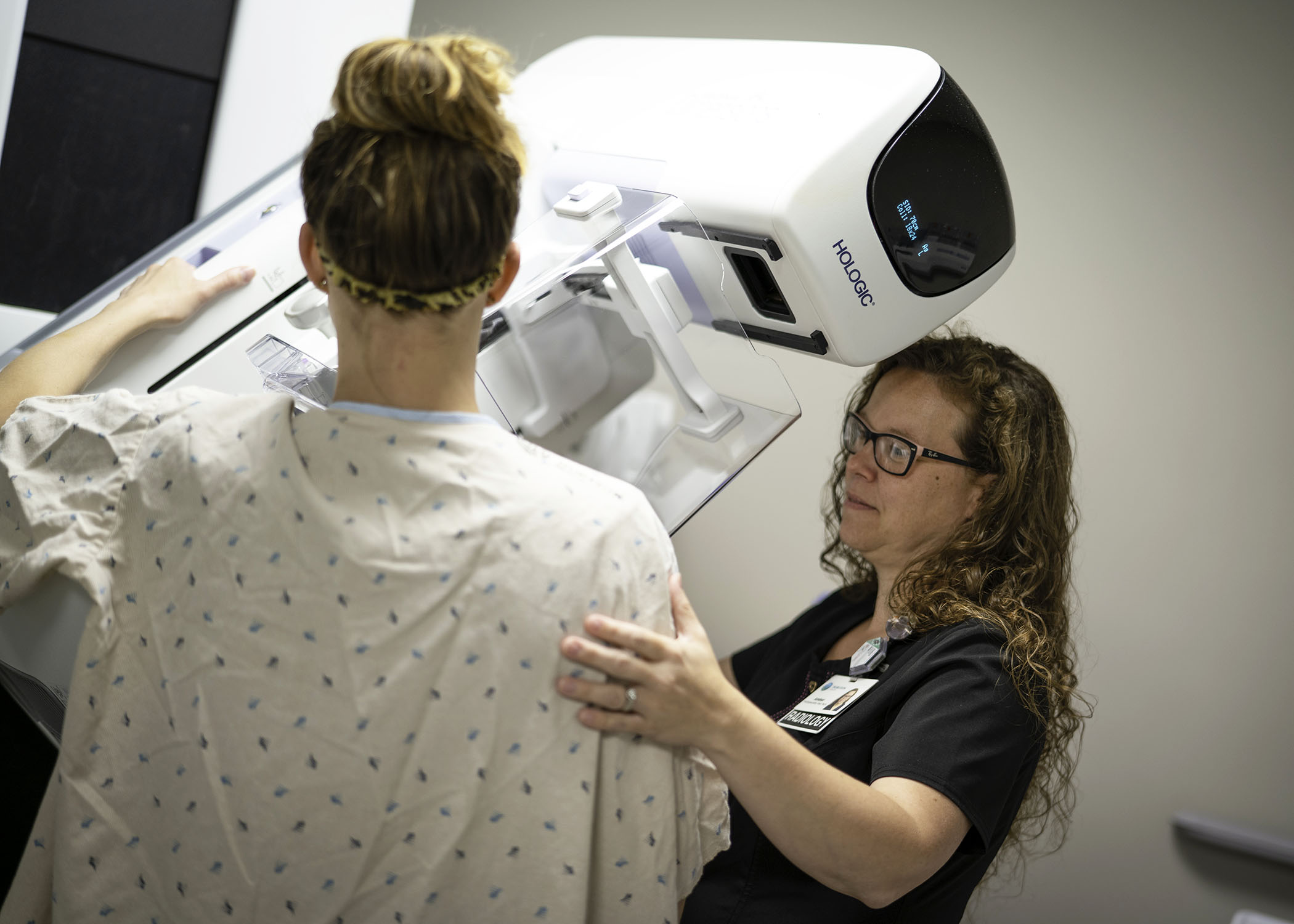What if a mammogram is abnormal?
- Category: Blogs
- Posted On:


As a woman, finding a lump in your breast can be frightening. However, most breast lumps are not dangerous, according to the Mayo Clinic. Even so, it is important to see your healthcare provider to be evaluated.
A screening mammogram is the best way to find breast cancer early, when it is easier to treat (see article on front page). If an abnormality is detected on a screening mammogram, it is followed by a diagnostic mammogram (which uses more X-rays) and breast ultrasound targeted to the suspicious area. If a risk is still present, then a biopsy follows, which is the only definitive way to rule out breast cancer.
A stereotactic breast biopsy uses X-rays to localize and guide a needle to the abnormal area in question. Next, tissue is obtained to further evaluate for cancer cells under a microscope. The biopsy is done under local anesthetic with a pinpoint puncture of the skin for the needle.
Stereotactic breast biopsy is less invasive than surgical biopsy. It is relatively painless and leaves little to no scarring.
Breast cancer is treated in several ways. Treatment depends on the subtype of breast cancer and its stage. People with breast cancer often receive more than one kind of treatment.
Surgery involves removing the cancerous tissue. A lumpectomy removes the tumor and some surrounding tissue, but not the breast itself. A mastectomy is total removal of the breast, and may involve reconstructive breast surgery.
Other treatments, according to the Centers for Disease Control and Prevention, include the following:
- Chemotherapy. Uses special oral and/or intravenous drugs to delay growth or kill cancer cells.
- Hormonal therapy. Blocks cancer cells from getting the hormones they need to grow.
- Biological therapy. Works with the body’s immune system to help fight cancer cells or to control side effects from other cancer treatments.
- Radiation therapy. Uses high-energy rays (similar to X-rays) to kill cancer cells.
The American Cancer Society states women can reduce their risk of cancer by making healthy choices, such as eating right, staying active, and not smoking. Morbid obesity also poses a higher risk for breast cancer.
It is also important to follow recommended screening guidelines, which can help detect certain cancers early. Since the Affordable Care Act, screening mammography is mostly free for all women above the age of 40.


